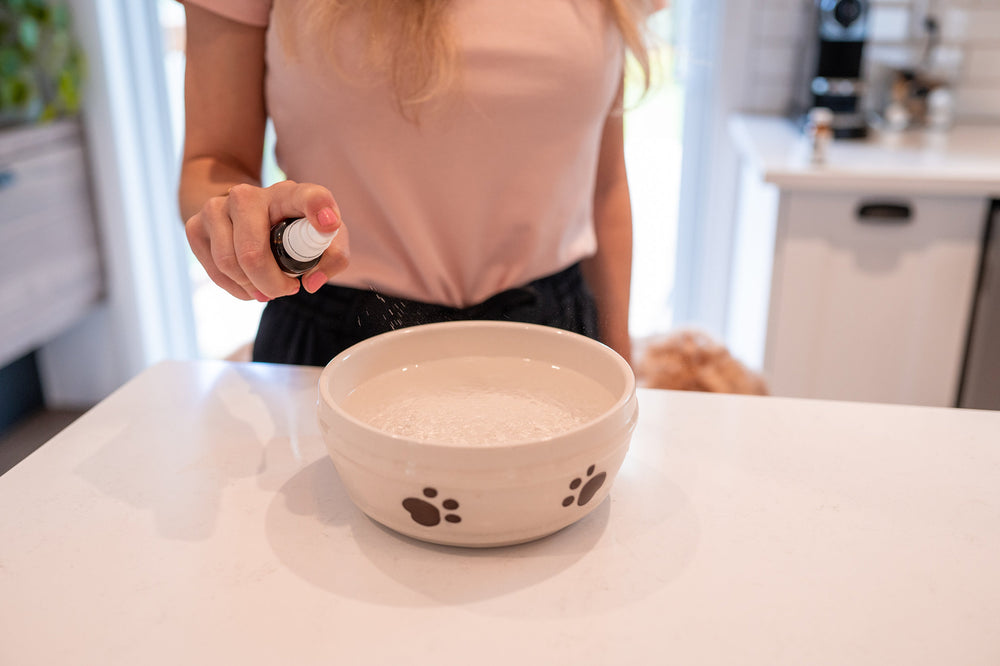7 Vet-Backed Warning Signs Your Dog Is Overweight
Noticing a little extra weight on your dog? Obesity in dogs is a growing but often overlooked health issue. Without proper management, it can lead to serious medical conditions and reduce your pet’s quality of life.
Canine obesity is a serious and rising health concern in the U.S. A 2018 survey found that 55.8% of dogs were either overweight or obese. This statistic underscores the importance of routine weight checks and proactive care to keep dogs healthy and active.
Being overweight puts dogs at risk for serious health issues that can lower their quality of life and shorten their lifespan. Recognizing the signs early is essential to protecting your dog’s long-term health.
7 Signs Your Dog May Be Overweight (and How to Spot Them)

Not sure if your dog is overweight? Recognizing the early signs can help you decide whether it’s time to consult your veterinarian. Addressing weight issues early is key to preventing more serious health problems down the line.
#1. Rounded body shape when viewed from above
When viewed from above, your dog should have a noticeable waistline behind the ribs. If their body appears oval or rounded instead, they may be carrying excess weight. This visual check is a simple first step in identifying potential obesity in dogs.
A healthy-weight dog typically has a clearly defined waist when viewed from above. Their body should taper near the rear with a straight, streamlined shape along the sides. This natural contour is a key visual cue of proper body condition in dogs.
#2. Using the feel test to check for hidden ribs
You should be able to feel your dog’s ribs with light pressure. If you have to press firmly or can’t feel them at all due to excess fat, your dog may be overweight. This simple “feel test” is an effective way to assess your dog’s body condition at home.
In a healthy dog, the ribs should be easy to feel with minimal pressure. They should feel similar to the back of your hand, noticeable but not protruding. This rib check is a quick and reliable way to monitor your dog’s weight at home.
#3. Side profile check for abdominal sagging
View your dog from the side to check for a sagging abdomen or a lack of a defined waist. If the belly hangs low or aligns with the chest, it may indicate excess weight. A healthy dog typically has a visible “tuck-up” where the abdomen curves upward behind the ribs.
In a healthy dog, the abdomen should slope upward from the chest, creating a visible "tuck-up" behind the ribs. This natural curve indicates proper weight and muscle tone. If the waistline is missing or hangs low, it may be a sign of excess body fat.
#4. Fat pads in overweight dogs
Check for excess fat in key areas like the chest, hips, and between the legs. According to Dr. Ochoa, DVM, from PetMD, some overweight dogs develop noticeable fat pads that may sway or “waddle” as they walk. These fat deposits are a clear sign your dog may be carrying unhealthy extra weight.
Dr. Ochoa also recommends checking your dog’s hips for fat pads that sit on top of the bone. These deposits can be an early sign of excess weight, even if your dog appears healthy overall. Regularly feeling these areas helps monitor changes and catch weight gain before it becomes a health issue.
#5. Low energy and exercise intolerance
Overweight dogs often show reduced energy levels and may become noticeably less active. Signs include excessive panting during normal walks, slower movement, and increased napping or reluctance to exercise. These changes in stamina and mobility can signal that your dog is carrying excess weight.
A healthy dog typically shows steady energy levels appropriate for their age and breed. They can handle regular walks, play sessions, and daily activities without tiring quickly. Consistent stamina is a key indicator of good overall health and proper weight.
#6. A tight-fitting collar or harness as a sign of canine obesity
If your dog’s collar or harness suddenly feels tighter, it could be a clear sign of overall weight gain. This change often goes unnoticed until regular gear no longer fits comfortably. Monitoring how well collars and harnesses fit is a simple way to track changes in your dog’s body condition.
#7. Overeating and appetite changes in overweight dogs
If your dog constantly rushes through meals or seems overly focused on food, it may be a sign of overeating. Behaviors like begging or guarding food can also point to poor eating habits. Free-feeding, or leaving food out all day, often contributes to unnecessary weight gain and obesity.
The Hidden Health Risks of Canine Obesity and Why Weight Matters

Obesity can seriously affect your dog’s health, leading to conditions like arthritis, heart disease, and diabetes. These issues often cause discomfort, reduce mobility, and impact daily life. Keeping your dog at a healthy weight supports a longer, happier, and more active life.
As mentioned, canine obesity is linked to numerous serious health problems that can affect your dog’s quality of life. Common issues include diabetes, arthritis, heart disease, liver and kidney problems, certain cancers, skin conditions, and breathing difficulties. Obesity can also lead to high blood pressure and reduced mobility over time.
Excess weight can pose greater health risks for certain dog breeds. Dachshunds are especially prone to back problems, while brachycephalic breeds like Pugs and Bulldogs may experience worsening breathing issues. Large breeds face an increased risk of orthopedic problems, particularly during growth and development.
What to Do Next: Consult Your Vet or Pet Nutritionist for a Canine Weight Loss Plan

If you discover your dog is overweight, the best next step is to consult your veterinarian or a pet nutritionist for a tailored weight management plan. An expert can help you make safe adjustments to your dog’s diet and activity to promote long-term health and well-being.
Get a professional diagnosis before starting a weight loss plan
If you suspect your dog is overweight, start by scheduling a veterinary exam and weigh-in. Your vet will evaluate your dog’s body condition based on their breed, size, and structure. This ensures any weight management plan is safe, effective, and tailored to your dog’s unique needs.
During the exam, your veterinarian will use a body condition score chart, typically on a 1 to 9 scale, with 4 to 5 being ideal. This helps determine whether your dog’s weight falls within a healthy range. Your vet can also rule out underlying medical issues, such as hypothyroidism or Cushing’s disease, that may be contributing to weight gain.
Consulting a pet nutritionist can provide valuable support in managing canine obesity. They can help create a balanced, breed-appropriate diet tailored to your dog’s specific needs and weight loss goals. Working with a nutrition expert ensures your dog gets the right nutrients while safely shedding excess weight.
Developing a personalized weight loss plan for your dog
If no underlying health issues are identified, your veterinarian will help you create a tailored weight loss plan for your dog. This may include a balanced, portion-controlled diet and a gradual increase in physical activity suited to their age and breed. A personalized plan ensures safe, sustainable weight loss and supports your dog’s long-term health.
Consistent exercise plays a key role in helping your dog lose weight safely. Start with 10–15-minute daily walks, gradually increasing to longer sessions based on their breed and age. Keep it fun with activities like fetch, frisbee, or canine agility to boost engagement and results.
Diet changes are essential for healthy weight loss in dogs. Your veterinarian will calculate your dog’s ideal daily calorie intake and may recommend a high-fiber, low-calorie food to promote fullness. Be sure to measure portions accurately and feed at consistent times to support steady progress.
Limiting treats is an important part of managing your dog’s weight. Avoid high-calorie options and instead choose healthy, low-calorie alternatives like carrots, green beans, broccoli, cucumbers, or celery. These dog-safe veggies can satisfy your pet’s cravings without adding unnecessary calories.
Ongoing weight monitoring through routine check-ups
Routine wellness exams, at least once or twice a year, are essential for tracking your dog’s weight and overall health. These check-ups help your vet assess progress and make any needed adjustments to the weight loss plan. Ongoing monitoring ensures your dog stays on track toward a healthier, longer life.
Weight gain in dogs is often linked not just to diet, but to aging and reduced organ function. Zumalka’s GENERAL DETOX is designed to help support digestion, cleanse vital organs, and promote overall health, especially in aging pets.
This comprehensive kit combines KIDNEY DRAINER, LIVER DRAINER, LYMPH DRAINER, ENVIRONMENTAL DETOX, and PROBIOPET to help eliminate toxins and strengthen the immune system naturally.
Key Takeaways
Recognizing the signs of obesity early gives your dog the best chance at a healthier future. With guidance from your veterinarian or pet nutritionist, many weight-related health issues can be prevented or even reversed. Taking action now helps ensure a longer, happier life for your dog.
Taking steps to prevent or manage obesity is one of the most impactful things you can do for your dog’s health. With proper care and commitment, many weight-related issues can be avoided or improved. The result is a longer, healthier, and more joyful life for your beloved companion.
Don’t wait. If you notice signs of weight gain, contact your veterinarian or pet nutritionist to schedule a check-up. A customized weight management plan can help your dog get back on track. Early action leads to better health, improved mobility, and a longer, happier life.
FAQs
How can I check my dog's weight at home?
To check your dog’s weight at home, use a bathroom scale by weighing yourself first, then again while holding your dog. Subtract the difference, and track changes regularly to monitor progress.
How to tell if a dog is bloated or fat?
Bloating causes a sudden, firm, swollen abdomen and may include restlessness, drooling, or discomfort. Excess fat develops gradually and feels soft. If you're unsure, contact your veterinarian immediately. Bloat can be life-threatening.
What happens if a dog is too fat?
When a dog is overweight, it’s at a higher risk for conditions like arthritis, diabetes, and heart disease. Obesity can reduce mobility, lower the quality of life, and shorten lifespan. Managing weight early supports long-term health.
Can I help my overweight dog lose weight?
Yes, you can help your overweight dog lose weight through a veterinarian or pet nutritionist-guided plan that includes portion control, a balanced diet, daily exercise, and routine check-ins. Taking action early promotes long-term health and improved quality of life.
How do I know my dog is overweight?
Your dog may be overweight if you can’t easily feel their ribs, see a defined waist, or notice reduced energy. A vet can confirm this with a body condition score and weight evaluation.
How do I debloat my dog's stomach?
If your dog’s stomach appears bloated, seek emergency veterinary care immediately. Bloat is a serious, life-threatening condition. Treatment may involve gastric decompression, surgery, or supportive care, depending on the underlying cause and urgency.
How do overweight dogs act?
Overweight dogs may appear less active, tire easily, pant excessively, and avoid exercise or play. They might struggle with mobility, show signs of joint pain, and gain weight in the chest, abdomen, or hips.
What foods make dogs overweight?
Dogs can become overweight from high-calorie foods, table scraps, fatty treats, and overfeeding. Foods with added sugars, excessive carbohydrates, or frequent snacks without portion control contribute to weight gain and poor overall health.









Hi Jim,
Thank you for your comment. I hope that this article has proven helpful for your dog. For sure, if you are already feeding the correct portions and also providing the right amount of exercise, be sure to have some blood tests done to make sure nothing is going on internally that is stopping weight loss. You may also like our blog article with more tips to help safely weight loss: https://www.homeoanimal.com/blogs/blog-pet-health/81155972-how-do-i-safely-and-effectively-help-my-dog-or-cat-lose-weight
I hope this helps!
HOMEOANIMAL
my 6 yr. old snauser/poole mix perferred weight is 31. he weighs 37. best way to get weight down ? has been on natural balance lit. 11/2 cup per day plus very small amount of treats. thanks for any reply. jim
Leave a comment